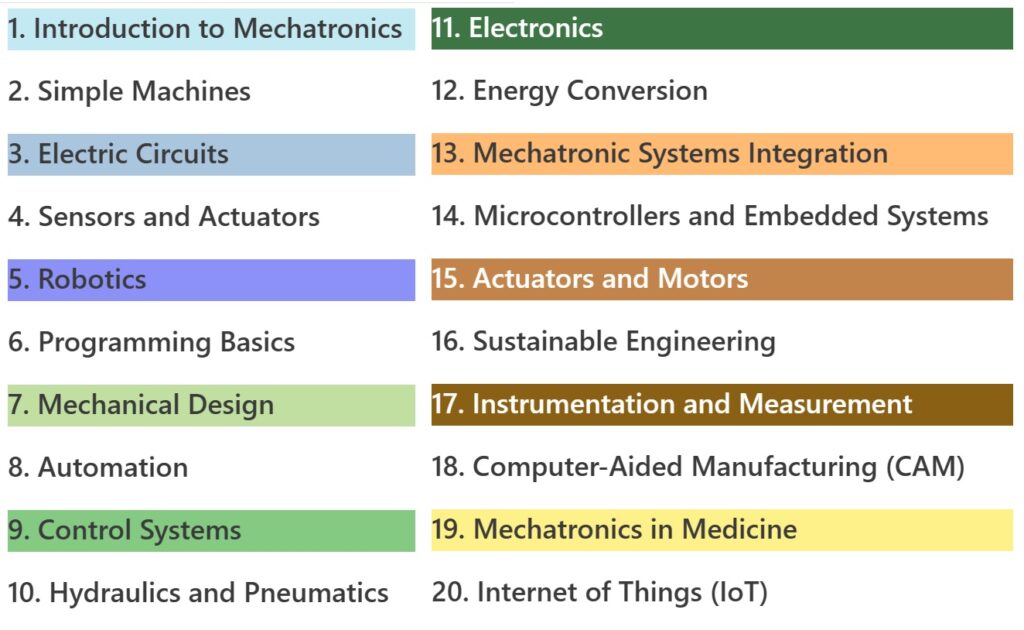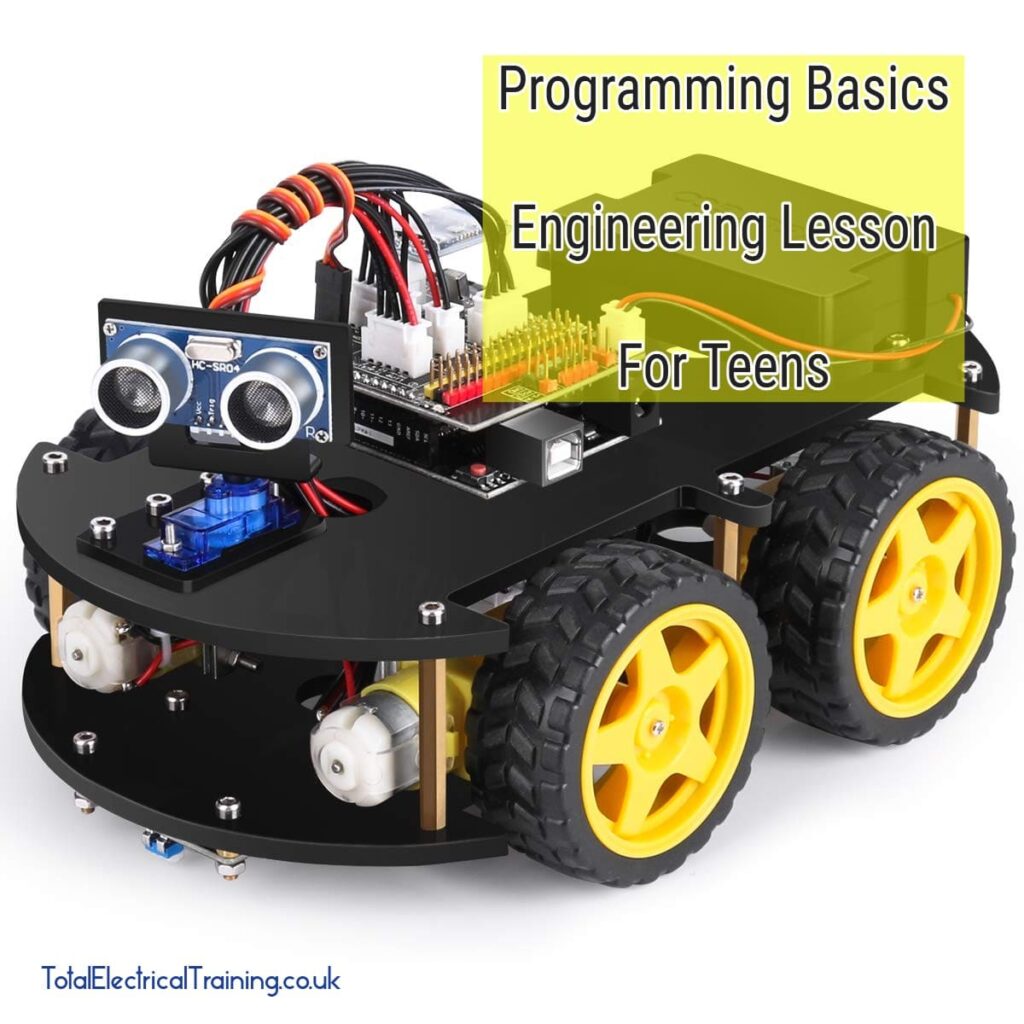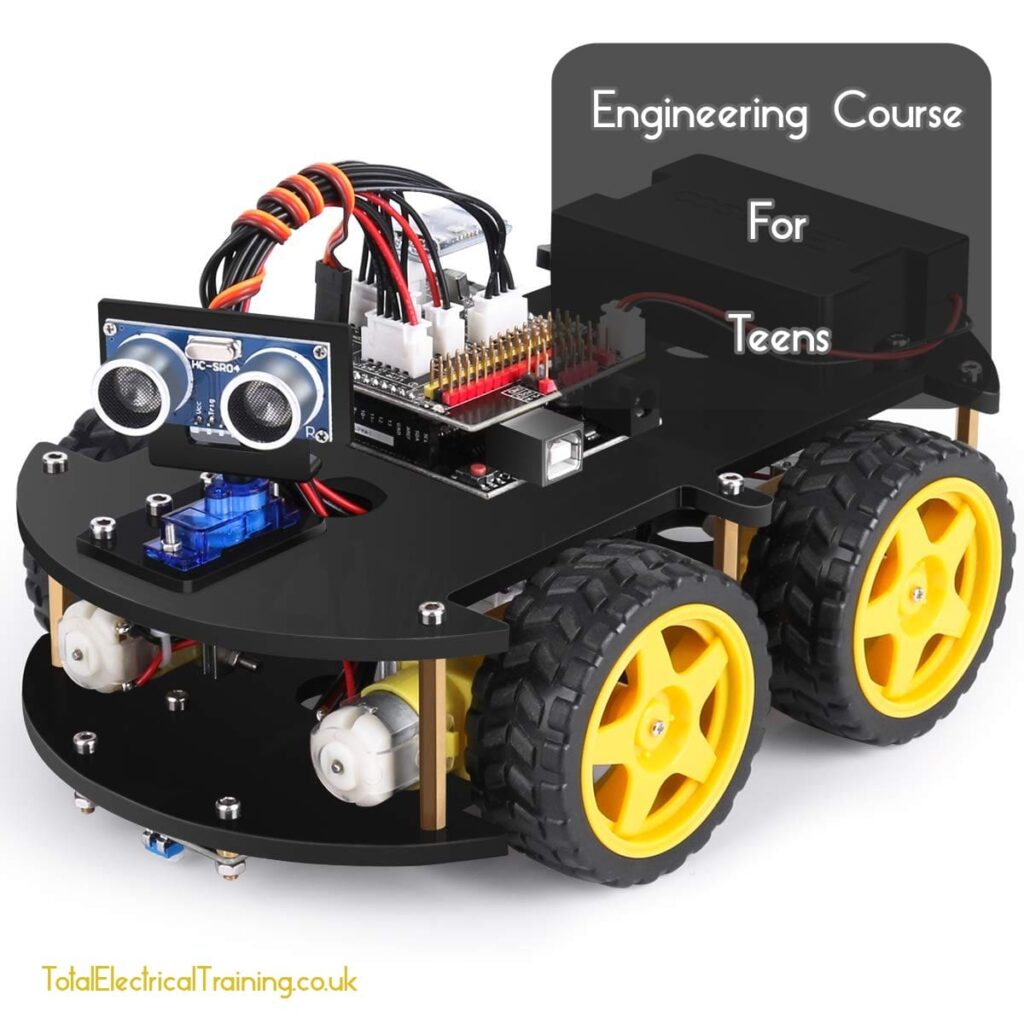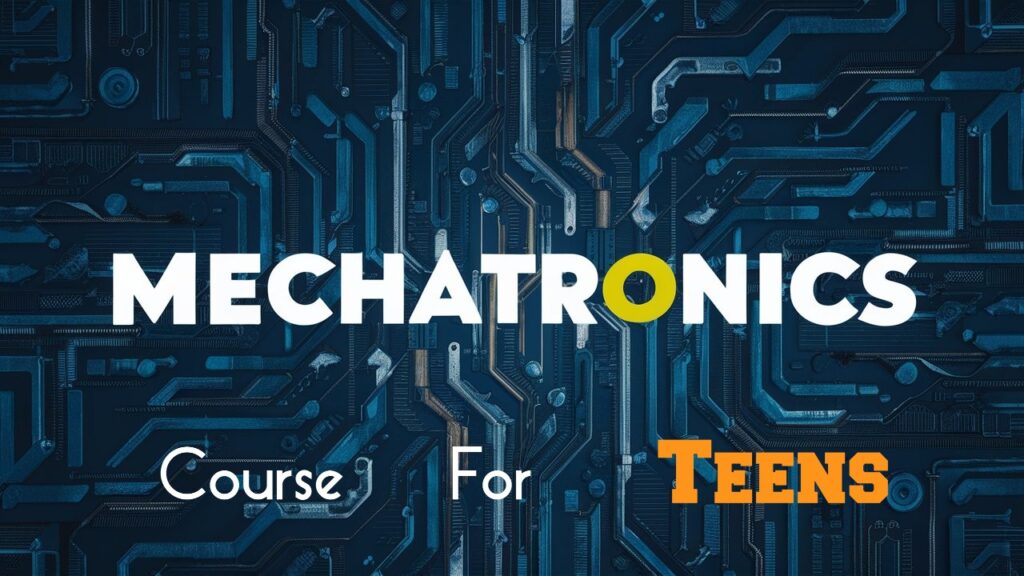Click the simple table below to view the FREE Mechatronics Course for Kids OVERVIEW

This Lessons Contains: READING, VIDEOS, QUESTIONS, and A HANDS ON PROJECT.
Just for fun, have a look at the video below which is all done by programming a microcontroller.
Understanding Programming Basics for Robotics
In the world of robotics, programming serves as the backbone that dictates a robot’s behavior and functionality. Whether you’re a beginner or an enthusiast diving into the realm of mechatronics, grasping programming basics is crucial. Let’s delve into some fundamental concepts to help you kickstart your journey in robotics programming.
What is a Microcontroller?
A microcontroller is a compact integrated circuit (IC) that functions as the brain of a robot. It contains a central processing unit (CPU), memory, and various input/output peripherals, all packed into a single chip. Microcontrollers are programmable, allowing developers to write code to control their operation and interact with external sensors, actuators, and other components. Think of it as the command center of a robot, executing instructions to perform tasks and respond to its environment.
How Does Programming Affect a Robot’s Behavior?
Programming determines how a robot perceives its surroundings, processes information, and executes actions. By writing code, programmers define the logic and algorithms that govern a robot’s behavior. For instance, instructions can be crafted to enable a robot to navigate through obstacles, detect objects, manipulate objects with robotic arms, or even communicate with humans. In essence, programming shapes the personality and capabilities of a robot, influencing its functionality and effectiveness in various tasks and environments.

Popular Programming Languages for Robotics
Several programming languages are commonly used in robotics, each with its strengths and suitability for different applications:
- Python: Known for its simplicity and versatility, Python is widely adopted in robotics for its ease of use and extensive libraries for tasks like computer vision, machine learning, and data processing.
- C/C++: These languages offer high performance and low-level control, making them ideal for real-time applications and systems programming in robotics.
- Java: Java provides platform independence and is favored for developing software that runs on different hardware platforms, making it suitable for robotics projects with diverse hardware requirements.
- ROS (Robot Operating System): While not a programming language itself, ROS is a popular framework for robotics development that supports multiple programming languages such as C++, Python, and Lisp. It provides tools and libraries for building complex robotic systems, facilitating communication between different components.
Why Learn Programming in Mechatronics?
Learning programming in mechatronics opens doors to endless possibilities in the field of robotics and automation. Here’s why it’s essential:
- Versatility: Programming skills enable you to work across various domains of robotics, from designing control systems to developing algorithms for autonomous navigation and machine learning applications.
- Problem-solving: Programming teaches you how to break down complex problems into smaller, manageable tasks and devise efficient solutions, a crucial skill in mechatronics where you’re often faced with intricate challenges.
- Innovation: With programming knowledge, you can unleash your creativity to innovate and develop novel robotic systems that address specific needs or push the boundaries of technology.
- Career Opportunities: Proficiency in programming opens up exciting career prospects in industries such as manufacturing, healthcare, agriculture, and space exploration, where robotics and automation play a vital role in revolutionizing processes and improving efficiency.
In conclusion, programming is the cornerstone of robotics, empowering enthusiasts and professionals alike to bring their robotic creations to life. By understanding the basics of programming and its significance in mechatronics, you embark on a journey filled with innovation, exploration, and endless possibilities in the fascinating world of robotics.

Hands on Project for this Lesson
You’ll be getting to know the free microcontroller simulation software on WOKWI.com, you can find an abundance of helpful beginner friendly tutorials on how to program different elements on this playlist on youtube. Choose your own project from the playlist and see if you can do it, or find another tutorial of your choice from youtube and complete it. This is an open ended project, learn and have fun!
Questions
- What is a microcontroller?
- How does programming affect a robot’s behavior?
- What are some popular programming languages for robotics?
- Why is it important to learn programming in mechatronics?
- Research Question: Investigate the role of artificial intelligence in robotics.
Buy me a Coffee
I would be honoured if you’d buy me a digital coffee to express your thanks for this Mechatronics Course I’ve put together to help eager minds excel in their knowledge, learning and success.
Your kind donation makes it possible for me to continue creating amazing content and fulfil my dream of keeping the majority of what I make FREE and Ad FREE!!!
Thank you from the bottom of my heart, and abundant blessings to you!

Join students and professionals
from across the world increasing their knowledge of Electrical Engineering.
One email at a time
We never send spam or give your information to anyone, Privacy Policy here.



